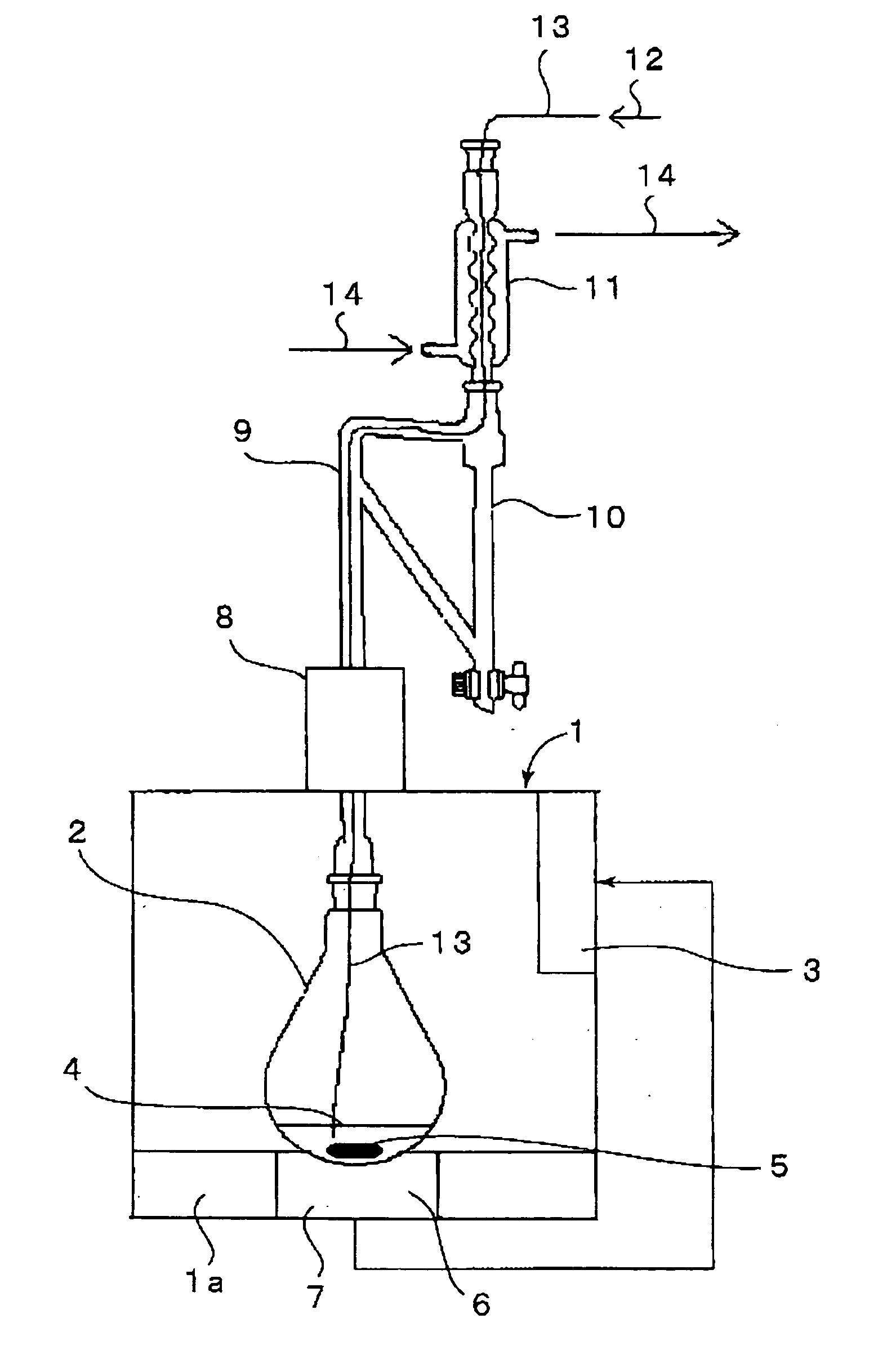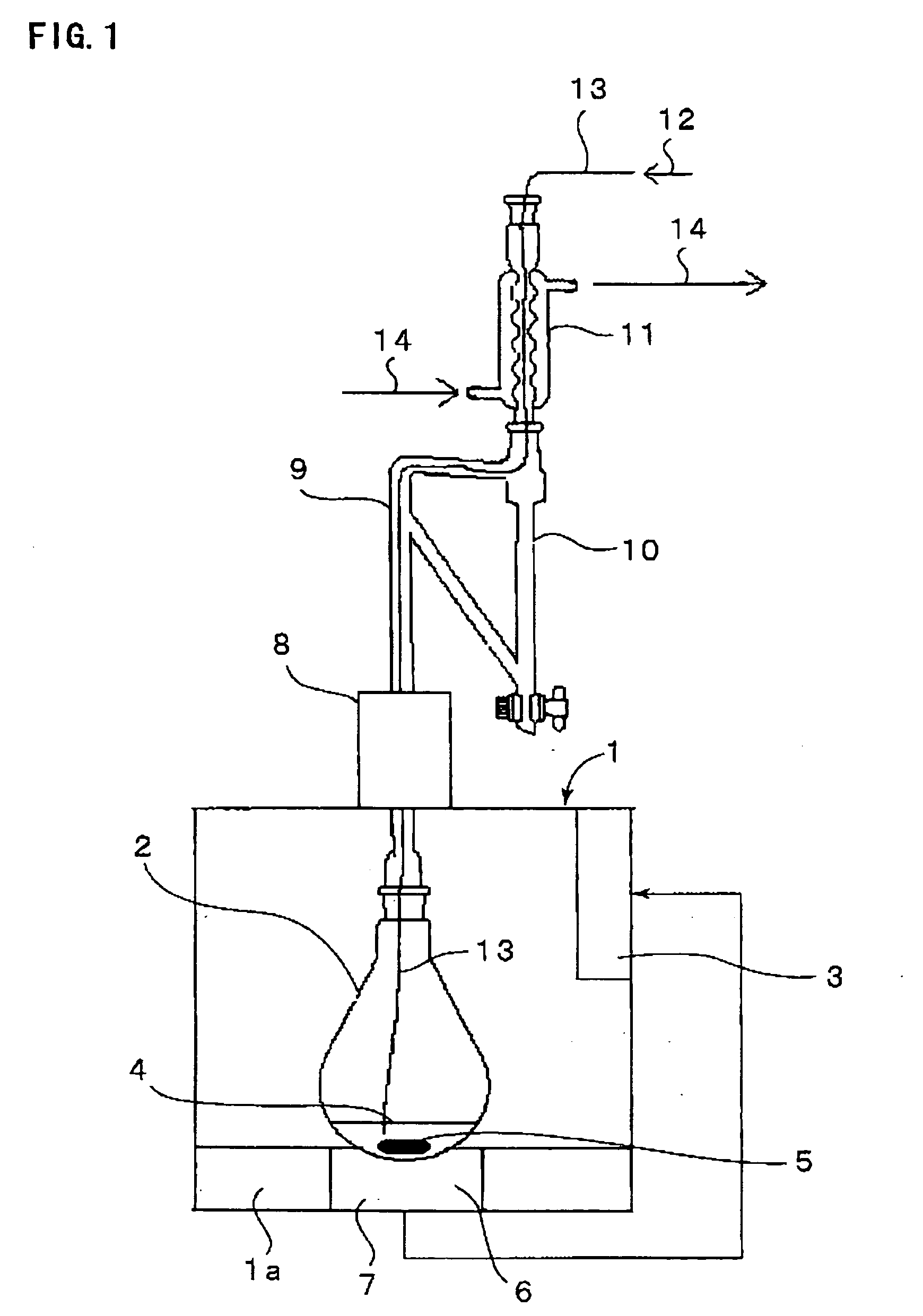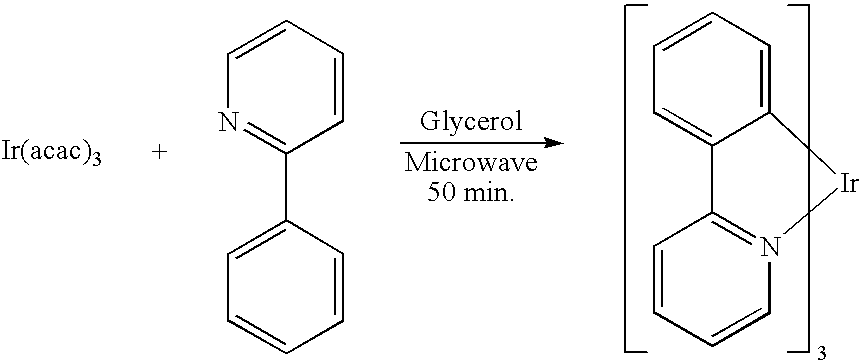Method and apparatus of producing organic compound
a technology of organic compound and method, applied in the direction of material analysis using wave/particle radiation, nuclear engineering, pharmaceutical packaging, etc., can solve the problems of long reaction time, method is economically disadvantageous, reaction temperature cannot be raised, etc., and achieve the effect of efficient production
- Summary
- Abstract
- Description
- Claims
- Application Information
AI Technical Summary
Benefits of technology
Problems solved by technology
Method used
Image
Examples
example 1
[0042] Using an apparatus shown in FIG. 1, iridium (III) tris(2-phenylpyridinato-N,O) [Ir(ppy)3] was prepared. A reaction formula of Ir(ppy)3 synthesis is shown below.
[0043] Using a 100 ml glass recovery flask as a reaction container, in this flask were put 1.0 g (2.04 mmol) of an iridium acetylacetonato complex [Ir(acac)3], 1.1 g (7.10 mmol) of 2-phenylpyridine and 5 ml of glycerol to form a reaction solution and the reaction solution was irradiated with a microwave having a wavelength of 2.45 GHz while being bubbled with a nitrogen gas. An output of a microwave and a reaction temperature were set at 300 W and 200° C., respectively. This setting temperature of 200° C. is higher than an acetylacetone boiling point of 140.4° C. and lower than a glycerol boiling point (decomposition temperature) of 290° C. Though the temperature of the reaction solution reached as low as 170° C. initially, it was elevated from about the time the acetylacetone of the low-boiling point component start...
example 2
[0049] Following the same procedure as in Example 1 and using an apparatus shown in FIG. 1, iridium (III) tris(2-phenylquinolinato-N,O) [Ir(phq)3] was synthesized. A reaction formula is shown below.
[0050] In a 100 ml recovery flask were put 1.0 g (2.04 mmol) of Ir(acac)3, 1.45 g (7.10 mmol) of 2-phenylquinoline and 5 ml of glycerol and a microwave similar to that of Example 1 was irradiated to the mixture at an output of 150 W and a reaction was initiated with a reaction temperature set at 200° C. Though the temperature of the reaction solution reached as low as 170° C. initially, it was elevated from about the time the acetylacetone started distilling. When the reaction solution temperature reached 200° C. or more, an objective substance was produced. The reaction was completed at 15 minutes after the reaction was initiated and the reaction solution was left standing until it cooled. 20 ml of methylene chloride was added to the reaction solution, and only the layer of methylene c...
PUM
| Property | Measurement | Unit |
|---|---|---|
| temperature | aaaaa | aaaaa |
| temperature | aaaaa | aaaaa |
| temperature | aaaaa | aaaaa |
Abstract
Description
Claims
Application Information
 Login to View More
Login to View More - R&D
- Intellectual Property
- Life Sciences
- Materials
- Tech Scout
- Unparalleled Data Quality
- Higher Quality Content
- 60% Fewer Hallucinations
Browse by: Latest US Patents, China's latest patents, Technical Efficacy Thesaurus, Application Domain, Technology Topic, Popular Technical Reports.
© 2025 PatSnap. All rights reserved.Legal|Privacy policy|Modern Slavery Act Transparency Statement|Sitemap|About US| Contact US: help@patsnap.com



